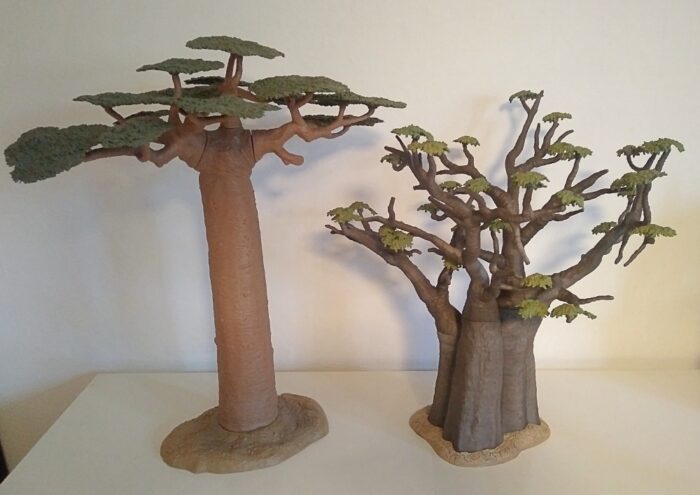The family of Baobabs is one of the most distinct and recognizable trees in the world. Eight species exist under the genus Adansonia, they are native to Subsaharaian Africa, Madagascar and Australia. The natural history of Baobabs is somewhat clouded and methods as molecular clocking yield debatable results.
Age: Pleistocene
Review: American Mastodon (Wild Safari by Safari Ltd.)
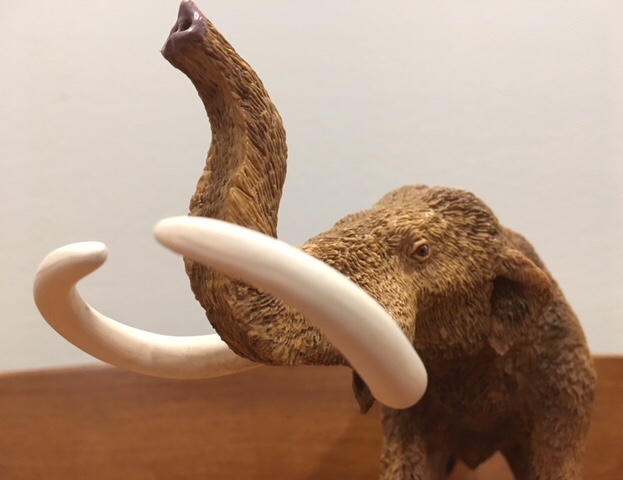
The American mastodon, Mammut americanum, is one of the very best-known prehistoric mammals. Many complete skeletons have been found throughout the North American continent, from this one-tusked male at the Royal Ontario Museum to this female and calf from the La Brea Tar Pits of California.
Review: Australopithecus (Paranthropus) boisei (Kaiyodo Dinotales Series 2)
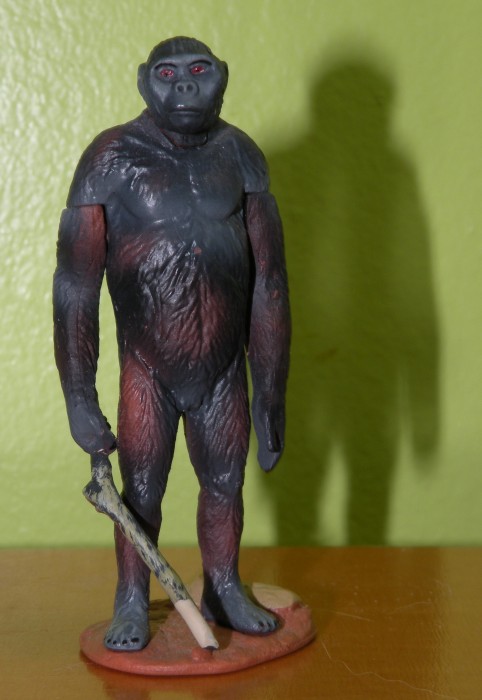
Review: Australopithecus male and female (Carnegie Collection by Safari Ltd.)

1974 was an important year in the understanding of human evolution. In the Awash Valley in Ethiopia, a set of bones were found that displayed ape and human characteristics, including bipedalism. This ‘missing link’ in human evolution was named Australopithecus afarensis, although the specimen itself was named Lucy, after the Beatles song “Lucy in the sky with diamonds”.
Review: Cave Bear (Jurassic Hunters by Geoworld)
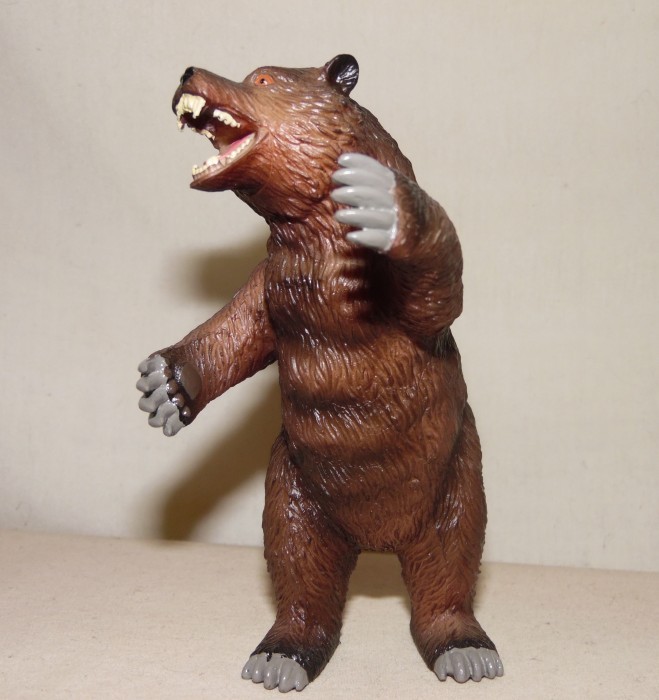
Last year, Geoworld released their new range of ancient mammals which consist of species that were never once replicated for the prehistoric toy market, This is probably because a lot of these are basically large versions of modern day mammals, and even though they were genetically different, the general public rarely sees them as such.
Review: Cave Bear (Papo)
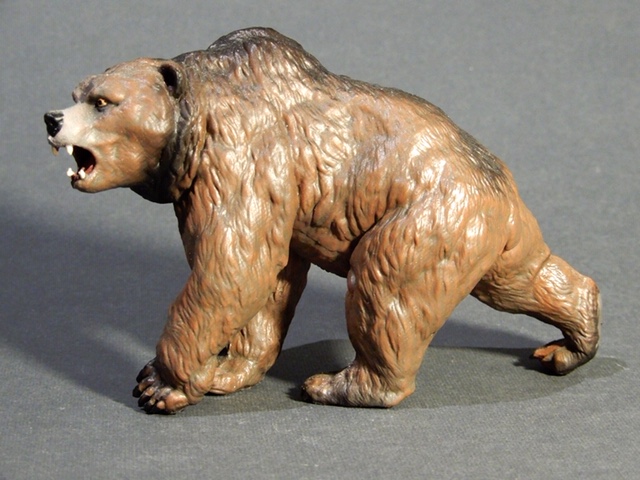
Back in the day, most producers of prehistoric fauna in plastic would have included a couple of mammals among their dinosaurs, the usual suspects being the mammoth and the sabretooth. Good to see that has changed over the years, with all manner of ancient mammals getting a look in, but there’s still not a lot of attention given to the cave bear.
Review: Cave Bear (Playmobil)

The Playmobil cave bear(Ursus spelaeus) measures about 10.5 cm long and is medium brown in colour with black eyes, a red tongue, and white teeth.
Review: Cave Bear (Prehistoire by Starlux)
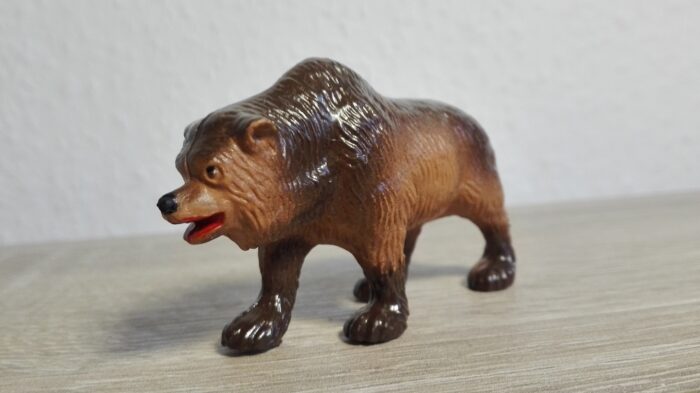
Review and photographs by Stolpergeist, edited by Suspsy
A lot of people feel a special connection to their local extinct Pleistocene megafauna, those mysterious beasts that once roamed where we stand along with the animals we see today. The majestic Irish elk among fallow deer, the American cheetah hunting pronghorns, the mighty giant wombat grazing alongside kangaroos, or the mega lemurs fending off fossa.
Review: Coelodonta (Jurassic Hunters by Geoworld)
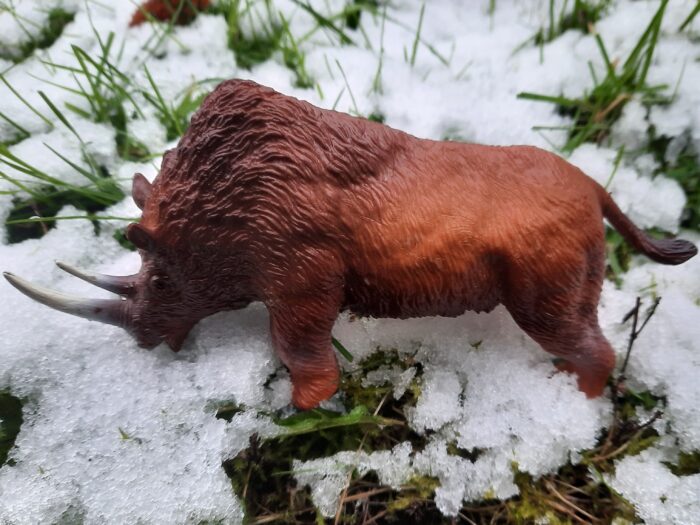
I sometimes can’t believe it’s been nearly five years since I first reviewed a figure, a woolly rhino by Papo. I felt recently that I should take a nostalgic look back at the beast that started it all, review a figure of the great animal that once roamed the grasslands of Europe and Asia some 10,000 years ago.
Review: Deinotherium (Bullyland)
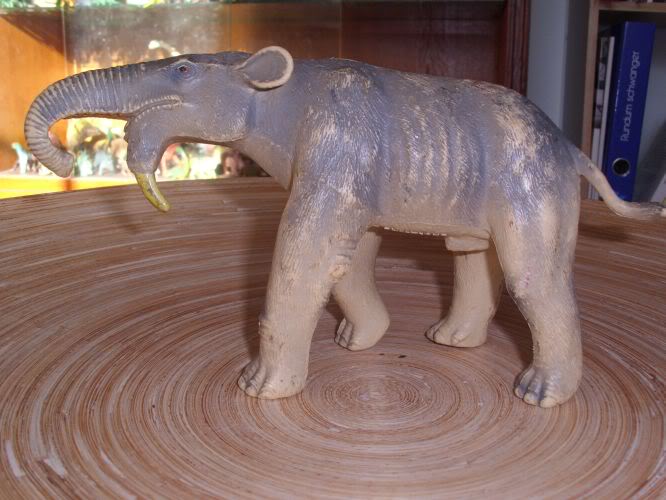
It is a highly sought after figure, not yet a myth, but quite close. This is due to the relatively little number of Deinotheriums that have been produced and delivered.
Deinotherium (“terrible beast”) was a large prehistoric relative of modern-day elephants that appeared in the Middle Miocene and continued until the Early Pleistocene.
Review: Deinotherium (Deluxe Collection by CollectA)
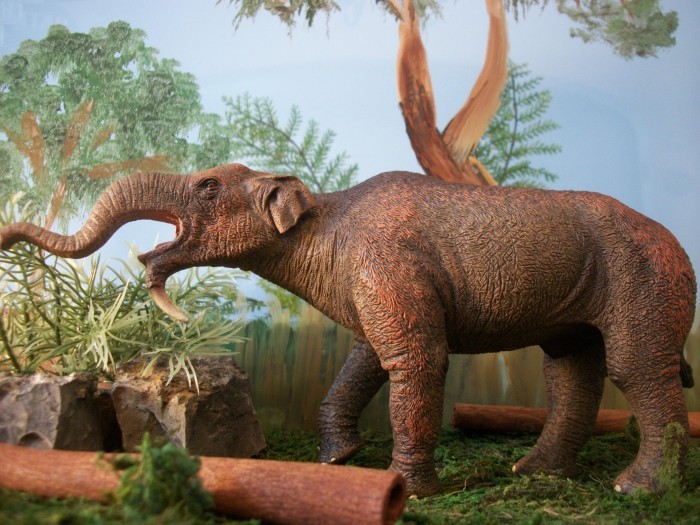
History: One of the biggest Proboscideans of all time lived during the Early Miocene through to mid Pleistocene, yet it is largely forgotten by the general public. The Woolly Mammoth gets all the attention and love, with appearances in film, literature, and in toy form. The family of Deinotheriidae feels ancient as it branched away from the current extant species of Elephants earlier than most of the other families.
Review: Deinotherium (Eofauna)
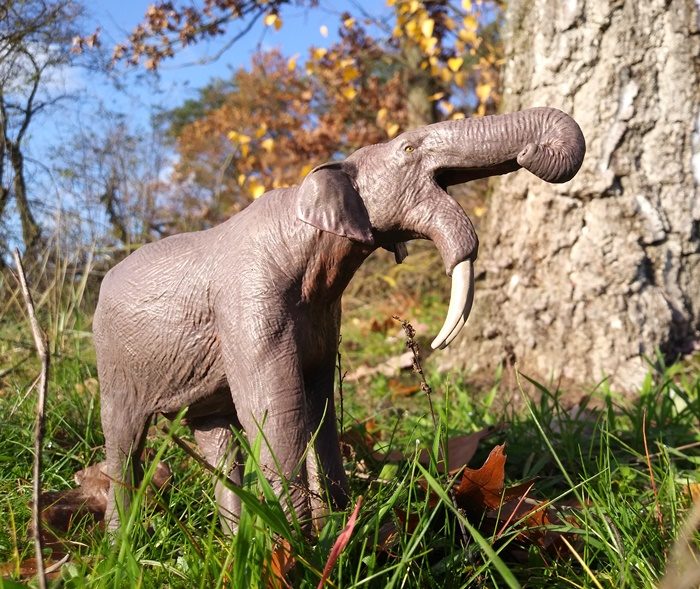
The pungent stench of masuclinity crawls along the edge of the forest. Leaves rustling softly as a vicious looking creatures ambles through the undergrowth. The young Deinotherium male looks up and hesitates as the potential adversary strides onto the grassy clearing. Much advanced in age and experience, the rival is much smaller then the young male, but also much bulkier.
Review: Deinotherium (Mojö Fun)

Review: Deinotherium (Starlux)
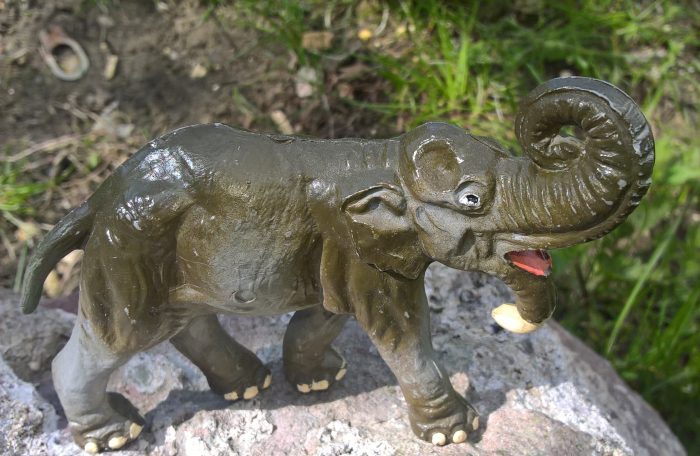
Once again I find myself returning to the origins of dinosaur figurines, Starlux, to look at another animal reproduced long before other companies got to it. This time, it’s Deinotherium, the terrible beast! A relative of modern elephants, this powerful probiscidian could grow to 13 ft tall and weigh as much as 11 tonnes (based on the largest species, D.
Review: Dimetrodon (Lindberg)
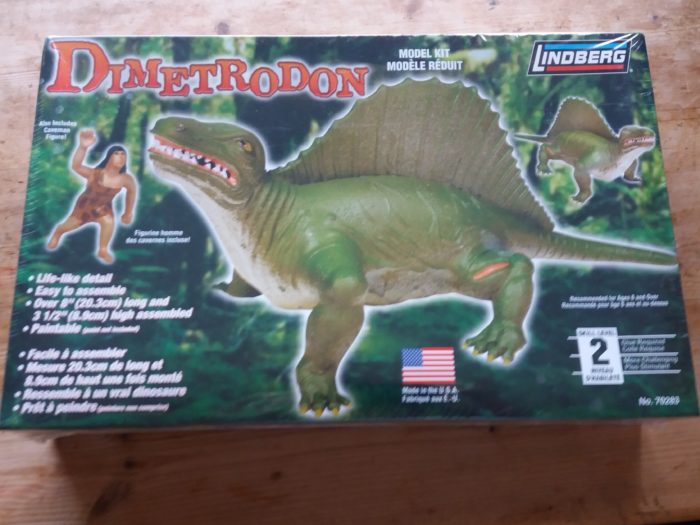
When people talk of dinosaurs, a few will always spring instantly to mind. Tyrannosaurus, Triceratops, Stegosaurus and Diplodocus are usually mentioned, along with Dimetrodon. However, Dimetrodon is not a dinosaur, but a synapsid, a mammal-like reptile, that died out 40 million years before the first dinosaurs.

